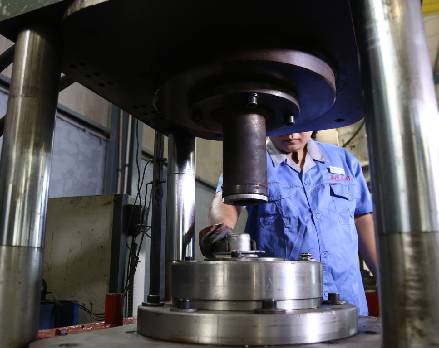 Afrikaans
Afrikaans  Albanian
Albanian  Amharic
Amharic  Arabic
Arabic  Armenian
Armenian  Azerbaijani
Azerbaijani  Basque
Basque  Belarusian
Belarusian  Bengali
Bengali  Bosnian
Bosnian  Bulgarian
Bulgarian  Catalan
Catalan  Cebuano
Cebuano  Corsican
Corsican  Croatian
Croatian  Czech
Czech  Danish
Danish  Dutch
Dutch  English
English  Esperanto
Esperanto  Estonian
Estonian  Finnish
Finnish  French
French  Frisian
Frisian  Galician
Galician  Georgian
Georgian  German
German  Greek
Greek  Gujarati
Gujarati  Haitian Creole
Haitian Creole  hausa
hausa  hawaiian
hawaiian  Hebrew
Hebrew  Hindi
Hindi  Miao
Miao  Hungarian
Hungarian  Icelandic
Icelandic  igbo
igbo  Indonesian
Indonesian  irish
irish  Italian
Italian  Japanese
Japanese  Javanese
Javanese  Kannada
Kannada  kazakh
kazakh  Khmer
Khmer  Rwandese
Rwandese  Korean
Korean  Kurdish
Kurdish  Kyrgyz
Kyrgyz  Lao
Lao  Latin
Latin  Latvian
Latvian  Lithuanian
Lithuanian  Luxembourgish
Luxembourgish  Macedonian
Macedonian  Malgashi
Malgashi  Malay
Malay  Malayalam
Malayalam  Maltese
Maltese  Maori
Maori  Marathi
Marathi  Mongolian
Mongolian  Myanmar
Myanmar  Nepali
Nepali  Norwegian
Norwegian  Norwegian
Norwegian  Occitan
Occitan  Pashto
Pashto  Persian
Persian  Polish
Polish  Portuguese
Portuguese  Punjabi
Punjabi  Romanian
Romanian  Russian
Russian  Samoan
Samoan  Scottish Gaelic
Scottish Gaelic  Serbian
Serbian  Sesotho
Sesotho  Shona
Shona  Sindhi
Sindhi  Sinhala
Sinhala  Slovak
Slovak  Slovenian
Slovenian  Somali
Somali  Spanish
Spanish  Sundanese
Sundanese  Swahili
Swahili  Swedish
Swedish  Tagalog
Tagalog  Tajik
Tajik  Tamil
Tamil  Tatar
Tatar  Telugu
Telugu  Thai
Thai  Turkish
Turkish  Turkmen
Turkmen  Ukrainian
Ukrainian  Urdu
Urdu  Uighur
Uighur  Uzbek
Uzbek  Vietnamese
Vietnamese  Welsh
Welsh  Bantu
Bantu  Yiddish
Yiddish  Yoruba
Yoruba  Zulu
Zulu belt conveyor roller types
Types of Belt Conveyor Rollers An Overview
Belt conveyor systems are integral components of various industries, facilitating the efficient transport of materials. At the heart of these systems are belt conveyor rollers, which play a crucial role in supporting the conveyor belt and ensuring smooth operation. Understanding the different types of conveyor rollers is essential for anyone involved in the design, maintenance, or operation of belt conveyor systems.
1. Idler Rollers
Idler rollers are stationary components that support the weight of the conveyor belt and the materials being transported. They are essential for maintaining belt alignment and preventing sagging. Idler rollers can be categorized into several types
- Smooth Idlers These have a flat surface, providing a stable support for the belt. - Trough Idlers Designed to conform to the belt's shape, these rollers provide better material containment, minimizing spillage. - Garland Idlers Comprising multiple rollers, garland idlers are used in applications where the belt needs to adapt to varying load conditions.
2. Drive Rollers
Drive rollers are essential for powering the conveyor system. They are connected to a motor and drive the belt movement through friction. There are several types of drive rollers
- Lagged Drive Rollers These have a roughened surface to enhance grip on the belt, reducing slippage. - Crowned Rollers Slightly curved, crowned rollers help in centering the belt and preventing it from veering off track. Drive rollers are critical in controlling the speed and direction of the conveyor system, thus influencing overall productivity.
belt conveyor roller types

3. Return Rollers
Return rollers are located on the underside of the conveyor belt, helping to guide the belt back to its starting point. They play a vital role in reducing wear and extending the lifespan of the conveyor system. Similar to idler rollers, they can also be categorized into
- Standard Return Rollers These are typically smooth or slightly crowned and are used in standard applications. - Rubber-Lined Return Rollers These are designed for applications handling heavier loads, providing additional grip and reducing wear on the belt.
4. Specialized Rollers
In addition to standard roller types, there are also specialized rollers designed for specific applications
- Impact Rollers Used at loading points to absorb the impact of heavy loads, preventing damage to the belt and rollers. - Self-Cleaning Rollers These are designed with features that help in removing dirt and debris from the belt, maintaining cleanliness and efficiency.
Conclusion
Choosing the right type of belt conveyor roller is vital for the operational efficiency of conveyor systems. The various types of rollers, including idlers, drive rollers, return rollers, and specialized rollers, each play unique roles in ensuring the effective transport of materials. Understanding these roller types enables businesses to optimize their conveyor systems for better performance and reduced maintenance costs.
-
Revolutionizing Conveyor Reliability with Advanced Rubber Lagging PulleysNewsJul.22,2025
-
Powering Precision and Durability with Expert Manufacturers of Conveyor ComponentsNewsJul.22,2025
-
Optimizing Conveyor Systems with Advanced Conveyor AccessoriesNewsJul.22,2025
-
Maximize Conveyor Efficiency with Quality Conveyor Idler PulleysNewsJul.22,2025
-
Future-Proof Your Conveyor System with High-Performance Polyurethane RollerNewsJul.22,2025
-
Driving Efficiency Forward with Quality Idlers and RollersNewsJul.22,2025





























